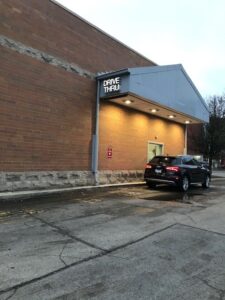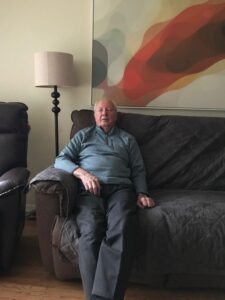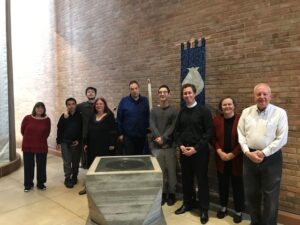Now I know what it feels like, or may have felt like. Kind of. Sort of.
I will never experience, in all likelihood, the very worst the COVID-19 virus can inflict on human beings. I was lucky in many ways. First, the virus just never found me as a target until early October of this year. Second, I am very physically fit for my age, and I don’t suffer from any chronic conditions that often expose people to more severe reactions to the virus. Third, by the time COVID-19 found me, I had the two initial shots of the Pfizer vaccine, and later a Moderna booster. My only failing was not having obtained the more recently released Omicron booster, but there is no question that vaccines made my path far easier than was the case for those who suffered earlier in the pandemic.
I spent most of my COVID time not knowing I had it, though there were indications that aroused my suspicions—just a bit. Late Sunday, October 9, I experienced some mild cold symptoms, but I sometimes have sinus problems that become more persistent as Midwest weather changes in the fall. On Monday, I began to experience more of a cold and struggled through online meetings, two about a video project, one preparing for an upcoming online training workshop. In the evening, I was supposed to volunteer with

It’s a lot easier to get a test now than at the height of the pandemic, when tests were as scarce as the places that provided them. Now you just pull up for an appointment, take the kit through the window, tickle your nostrils with a swab, and hand it all back to the pharmacist.
signature collection to help place our incumbent Chicago alderman, Daniel La Spata, on the municipal ballot next spring, but I called it off because I was not feeling well. By the next morning, I took a nasal swab COVID test at Walgreen’s, but the test came back negative the following day. As a result, I assumed I simply had what I called “the ordinary crud” of a normal cold. Just deal with it for a few days, I thought, and get over it.
I made no real changes to my plans and tried to maintain my normal pace. The previous week, curiously, had included my participation as a consulting expert in two online symposiums, both lasting two and three-quarter hours, on Tuesday and Thursday for a project at Johns Hopkins University addressing pandemic community recovery. I moderated the final panel on Thursday, dealing with the use of metrics, which are essentially statistical targets, for tracking the many variables concerning social equity and public health factors that would guide such recovery. In other words, COVID-19 already had my intellectual attention. I had no reason to suspect It would seize my medical attention as well.
But I was wrong on that count. By that Tuesday, some of the infamous COVID-19 fatigue was settling in, and the cold was tightening its grip. I had planned to attend a program of the Society of Midland Authors at Cliff Dwellers in downtown Chicago that evening. As on Monday night, I never made it. It seemed wiser to stay home. It was becoming a pattern.
Nonetheless, I spent Wednesday morning at a dealership service department. While in the waiting room, I met online with two planned guest speakers for my online University of Iowa class, which meets in the fall semester on Thursday evenings. I was very much looking forward to letting Linda Langston and Kehla West take over the class a week later because, in my opinion, both are impressive members of the natural hazards professional community and could share valuable insights. “Planning for Disaster Mitigation and Recovery” offers graduate planning and public affairs students serious comprehension of the natural-hazard threats facing our communities. Linda is a former county supervisor of Linn County, Iowa, who had helped lead her community through the 2008 floods that overwhelmed Cedar Rapids and into the recovery that followed. She later worked nationally on resilience issues with the National Association of Counties before returning to Cedar Rapids as a consultant. Kehla works with Region 5 of the Federal Emergency Management Agency in Chicago. Although she was doing me a favor by sharing her federal government experience, she regarded it as a great honor to be asked to speak to a class in which she was once a student. I was enthusiastic about sharing my virtual stage with them for two hours. The meeting was a breeze.

All right, this is a simulation of what I may have looked like, but it’s probably close. I found myself waking up in a seated position on the couch more than two hours after falling asleep early in the afternoon.
But most days that week, with increasing frequency, the afternoon was not. I no longer even remember which day was which, but I know that on several occasions, I would hit a wall of fatigue by late morning or early afternoon, and work would grind to a halt. One day, this happened around 1 p.m., and to regain some energy, I went downstairs from my home office to sit on the living room couch. I simply disappeared into deep slumber, with no recollection of anything. Sometime well after 3 p.m., I woke up, looked at the clock, and wondered where my day had gone. For someone very conscious of pending deadlines and obligations, it was deeply frustrating. At the end of the day, I like to know what I have accomplished. I did not want to find that I had lost a major chunk of my day to exhaustion. It became hard to believe that a mere cold had done this, but I kept thinking about that negative test. It was not COVID. I was just worn out fighting a cold. But day after day, I watched in growing alarm as the number of tasks falling behind schedule kept growing. The will power and drive that sufficed in normal circumstances to overcome such deficits never materialized, and the gap widened instead. The spirit was willing, but the flesh fell asleep, day after day.
That Thursday evening, I taught my class as usual. But it was not so usual. It became patently obvious that I was struggling with my voice, with sinus difficulties, with watery eyes, with fatigue, but I plugged away for two hours. By Saturday, in a phone conversation with someone about a potential film grant proposal, I struggled again in the conversation because my voice was weak, but I pushed ahead because the call was important, and the proposal deadline was at the end of the month, just two weeks away.
And so it went. If a meeting was on the telephone or online, I could make it work even if I was exhausted after it was over. If it was in person, I would cancel. Fortunately, most meetings, including a debrief with Johns Hopkins about the symposium two weeks earlier, a HUD guidebook review panel, and a Midland Authors board meeting, were online, usually via Zoom. I had contacted my doctor over the weekend of October 15-16 through a patient portal, and he asked me to come in, which I did by Wednesday, October 19. He made some suggestions but accepted the negative COVID test result. Following his advice, I began using a Neti pot to control the sinus congestion—and it works, by the way. In combination with Flonase (after the Neti pot), it has been effective. The fatigue, however, took its own good time to fade away.
The next day, Thursday, I had class in the evening, the one at which Linda and Kehla would speak in tag-team fashion about local and federal perspectives on planning for disaster recovery. That afternoon, Jean tested positive, much to her surprise. In our pre-class banter on Zoom, I mentioned that to Linda, who repeated it to Kehla when she logged on: “Jim’s wife tested positive for COVID.” Kehla immediately expressed her regrets. They taught the class, I offered occasional commentary, and for the most part, I got to rest my voice and conserve my energy.
But I had also decided at that point that getting another test the next morning was imperative. By mid-day Saturday, a Walgreen’s e-mail informed me that I had tested positive. I discussed it with an emergency room doctor, and later my primary physician, who said the symptoms we discussed just a few days before sounded a lot like COVID to him at the time. The ER doctor stated that, based on our discussion of what led me to get tested again, I had probably had COVID all along and may unwittingly have infected Jean. The verdict of these two men made sense to me, but of course, it was now after the fact. I was actually near the end of my COVID experience before I ever knew for certain that I had it.

Alex, to right of candle, after baptism service, with me at far right, Pastor Nancy Goede, Pastor Matt Stuhlmuller, Alex, sponsor Kornelius, and members of my family, including Jean, far left. I later wondered about any unintended exposure I may have cause through unawareness that I even had COVID at that point.
If there was one situation that brought some regret–it seems not to have produced any adverse consequences that I am aware of–it was that, not believing I had COVID, I joined others at our church for our grandson Alex’s baptism on October 16. Mass spreader events were at one time rather scary propositions. But there I was, unaware, part of a ritual and celebration that was a happy event but could have infected others. The following Sunday, I stayed home because by then, I knew I had contracted COVID.
Although I am certain that skeptics of the vaccines (and I know some) would say this was just one man’s opinion, the ER doctor stated that the vaccines had surely helped make my case milder (and Jean’s was milder still), and that the vast majority of those now being hospitalized or dying from the virus are unvaccinated. The statistics I have seen on the subject seem strongly to suggest as much. But people love to argue from anecdotes, which are easier to understand than statistical data, and the resistance will surely continue. The COVID-19 pandemic seems closer to having run its course after nearly three years. All pandemics eventually lose steam.

COVID is no longer half as scary as the ghost lady and her companion on Halloween. Okay, just kidding. But that guy is freaky.
By the following week, with minor help from a cough suppressant the ER doctor prescribed, I was able to regain energy and focus on the tasks that I had neglected for almost two weeks. They were too important to me to do otherwise. One was completing a grant proposal for a film project I am leading under the auspices of the Hazard Mitigation and Disaster Recovery Planning Division of the American Planning Association. The deadline was October 31, and with significant money at stake, I was not about to blow it. We had been laying the groundwork for weeks, but I needed to write some powerful explanations of our project and submit all the necessary documentation, which I did by that morning. I was able to walk our grandson through the neighborhood for Halloween and pass out candy afterwards, while triggering the spooky voice of our alabaster “ghost lady” without being noticed. She impressed only the very young, drawing only amused yawns from tweens and teenagers.
But that was just the beginning of a list of tasks and projects needing my urgent attention. I had promised to create a case study of Hurricane Michael recovery to present to my students on November 10. I finally completed it just an hour before class. On Saturday, November 12, I hosted with Amanda Torres, formerly the city planner for Rockport, Texas, an all-day training workshop on hazard mitigation and disaster recovery, offered as part of my teaching commitment with the University of Iowa School of Planning and Public Affairs. I had two documents I had promised to review, for which I sought and received additional time.
During the illness, I stopped my exercise routine. I currently visit the gym twice weekly with a rotating routine of exercises. After the illness had run its course, I still missed the workouts in favor of catching up on work. Before Christmas, I will turn 73. I find the exercise vital to good health at this stage of life, and I became anxious about the six-week gap that developed before I finally resumed the workouts on November 16. I have taken to them with relish. I simply feel better because of it, and I can finally spare the time again. Two days after Thanksgiving, I ran into a former trainer I worked with at X Sport, Michael Caldwell, who told me about his new work with companies on employee fitness and ergonomics, noting the serious toll on many people of failing to pay attention to such issues. I wished him well in his new enterprise. He seemed pleased that I was returning to form, just as he had always respected my resilience in the past after some injuries and surgeries.
But I also know that I am very fortunate. I find absolutely no evidence that I have developed any long-term COVID symptoms. I never fell victim to COVID-19 in the early days of the pandemic despite a short-term hospital stay in May 2020 on the only floor with non-COVID patients. I have even discovered the accidental grace of hundreds of presumed strangers who, in successive waves in October and November, registered as new subscribers to this blog at a time when I was seldom posting anything. I wanted to change that but just could not get it done. Their attention to my blog despite several weeks with no new posts encourages me to get back into the ring. I must have offered something in earlier posts that still attracts readers, and I hope to keep it that way for a long time. I hope this humble story adds to the blog’s overall value. I shall certainly try my best.
Jim Schwab
